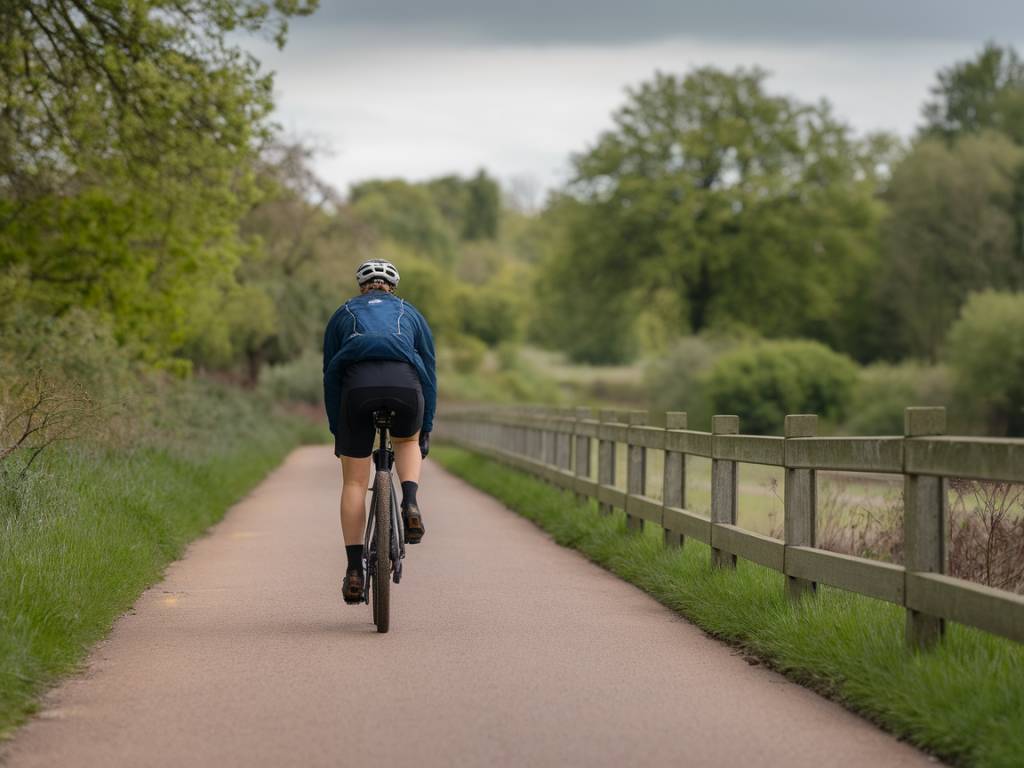Why Choose Eco-Cycling in the UK?
Few methods of travel marry sustainability and adventure quite like cycling. As the climate crisis urges us to rethink our carbon footprints, cycling—whether for commuting, leisure or travel—emerges as a low-emission, high-reward alternative. In the UK, a country interlaced with greenways, coastlines, and historic villages, eco-cycling routes offer not just beautiful escapes, but a sustainable way to explore them.
The environmental impact is clear: cycling emits no direct greenhouse gases, reduces reliance on fossil fuels, and encourages a slower, more conscious interaction with local ecosystems. Add to that the rise of community-led green trail projects and the support for cycling infrastructure, and it’s no surprise that eco-cycling is fast becoming a backbone of sustainable tourism across the UK.
What Makes a Cycling Route ‘Green’?
It’s not just about pedalling. For a cycling route to be truly eco-friendly, multiple factors come into play:
- Car-free or low-traffic paths: These reduce vehicle emissions and make biking safer and more accessible.
- Eco-accommodation along the route: Think B&Bs powered by renewables or certified eco-lodges.
- Local sustainability initiatives: Community bike rentals, repair hubs, or routes that support conservation areas.
- Integration with public transport: Routes accessible by train reduce the need for car travel to starting points.
With those criteria in mind, let’s take a tour of some of the UK’s best eco-cycling corridors—routes that offer environmental responsibility without compromising on beauty or culture.
The Camel Trail – Cornwall
Distance: 18 miles / 29 km
This traffic-free route in Cornwall is a poster child for green cycling in the UK. Stretching from Padstow to Bodmin via Wadebridge, the Camel Trail is built upon a disused railway line and offers incredible views over the Camel Estuary, part of a designated Area of Outstanding Natural Beauty (AONB).
It’s not just scenic—it’s sustainable. Local cycle hire shops have embraced electric bikes, solar charging stations, and even bamboo bike frames. Wildlife spotting is part of the experience, with estuary birds and, occasionally, otters making appearances.
Feeling peckish? Try lunch at a zero-waste café in Wadebridge or finish in Padstow, where more businesses are sourcing local, organic produce. As far as green travel goes, the Camel Trail is hard to beat.
NCN Route 65 & The Solar System Way – Yorkshire
Distance: 13 miles / 21 km (Solar System Way segment)
Combining science, sustainability and some tongue-in-cheek extraterrestrial fun, the Solar System Way is a segment of National Cycle Network Route 65 connecting York to Selby. What makes this route special? Along the flat, car-free track lie scale models of the planets, placed proportionally to their distance from the Sun—geeky, we know, but deeply engaging for kids and adults alike.
The trail runs through reclaimed rail corridors and offers a living example of how former industrial zones can be regenerated into biodiverse and people-friendly corridors. It’s also an educational trip, with interpretive signs explaining both astronomical and ecological facts.
Accessible by train from York or Selby, this is a perfect day ride that aligns closely with The Green Magazine’s mission: learning, engaging, and travelling light.
The Tarka Trail – Devon
Distance: 32 miles / 51 km (Braunton to Meeth)
Named after the beloved literary otter from « Tarka the Otter », this trail in North Devon is more than a paean to local wildlife. The Tarka Trail reclaims old railway lines and threads through wooded valleys, glistening riversides, and expansive estuaries that form part of UNESCO Biosphere Reserves.
What’s to love? Off-road for the majority of the route, the trail is family-friendly and heavily invested in conservation. The local government and community groups have installed bespoke benches made from recycled plastics and timber sourced through sustainable forestry partnerships.
Bike hire shops in Barnstaple and Bideford offer e-bikes and repair services to extend the trip’s green credentials, and local lodging options include an eco-hostel powered by solar panels. With so many quiet moments and birdsong to enjoy, you’ll wish the trail were longer.
The Caledonia Way – Scotland
Distance: 234 miles / 377 km
Looking for something more ambitious? The Caledonia Way spans a dramatic stretch from Campbeltown to Inverness, combining ancient woodlands, lochs, and mist-wreathed mountains in the Scottish Highlands. Yes, it’s long—but don’t worry, it’s entirely possible to break the route into manageable segments.
This ride is a masterclass in how to explore sustainably vast landscapes. The route is dotted with eco-lodges and community-supported rest stops that serve local produce and keep waste to a minimum. A significant portion follows traffic-free paths, many of which trace old railway lines.
Because this trail crosses key rewilding zones and conservation areas—like those supported by Trees for Life and the John Muir Trust—cyclists are encouraged to travel with mindfulness and adherence to ‘Leave No Trace’ principles.
Great Western Greenway – Northern Ireland
Distance: 26 miles / 42 km
Part of the cross-border greenway initiative, the Great Western Greenway connects Westport to Achill Island in County Mayo. Okay, that’s technically in the Republic of Ireland, not the UK proper, but it’s too ecologically significant to ignore—especially as many Northern Irish cycling initiatives are mirroring its success.
The route takes you past patchworks of peatland, Atlantic coves, and Gaelic heritage sites. It’s a brilliant model for how low-impact tourism can revive rural economies: cafés powered by wind turbines, artisanal shops promoting local crafts, and bike stations run by community cooperatives all thrive along the path.
Local councils have even introduced biodiversity monitoring along the route, turning cyclists into citizen scientists. Now that’s next-level eco-cycling.
Tips for Making Your Cycling Trip Truly Green
While the routes themselves may be eco-conscious, your individual choices shape the full environmental impact. Here are a few recommendations to keep your carbon tyres light:
- Opt for local bike hire: Supporting local businesses keeps emissions and shipping down.
- Pack reusable: Bring a refillable water bottle, eco-friendly sunscreen and litter bags.
- Travel by train: Many of these routes are easily reached without a car. Use the National Rail’s cycle-friendly services.
- Stay ethical: Choose accommodations with green credentials (Energy Efficiency Labels, Green Tourism certification, etc.).
- Eat seasonal and local: Farmers markets and local eateries reduce the carbon cost of your meals.
Pedal Toward a Greener Future
Cycling through the UK’s rolling landscapes, rugged coastlines, and vibrant communities isn’t just good for your health—it’s good for the planet. These routes aren’t just about views or miles covered; they’re about connecting with a slower, more intentional form of travel. A form that gives back more than it takes.
In a world where we’re constantly told to do less—drive less, consume less, fly less—cycling offers a joyful exception. You can do more: explore more, breathe more, experience more. And at the end of the day, there’s something incredibly powerful about the simplicity of two wheels and a willingness to go the eco-friendly distance.
So, helmet on, water bottle filled, and map in hand—where will your next ride take you?



